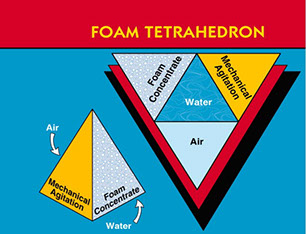Colorado residents sue 3M, other manufacturers over groundwater contamination
By: Kirk Mitchell
Class-action certification sought by residents of Fountain, Security and Colorado Springs
Nine residents of Fountain, Security and Colorado Springs with elevated levels of cancer-causing chemicals in their blood have sued The 3M Corporation and various manufacturers that produced and sold firefighting foams they claim has leached cancer-causing chemicals into the Fountain Creek Watershed area, polluting the groundwater.The lawsuit seeking class-action certification was filed Thursday on behalf of the nine residents living near Peterson Air Force Base, was filed by Colorado Springs attorney Michael McDivitt and New York City attorneys Hunter Shkolnik, Paul Napoli and Louise Caro.
Other companies named as defendants in the lawsuit include The Ansul Company of Wisconsin; National Foam, Inc. of Pennsylvania; Angus Fire of Bentham, United Kingdom; Buckeye Fire Equipment Company of Mountain, N.C.; and Chemguard of Wisconsin.
The plaintiffs are seeking a declaration that the defendants acted with gross negligence and careless disregard for the safety of residents who use water from the contaminated watershed. They are seeking a court order requiring defendants to test and monitor each property and all drinking water within the contamination area.
They are also asking that a judge order defendants to provide medical monitoring for all those in the proposed class, the lawsuit says. The plaintiffs are also seeking compensatory and punitive damages.
The lawsuit says the U.S. Air Force and other branches of the military, including the Army, use or have used firefighting foams that degrade into perfluorooctanoic acid (C8), which is highly soluble in water and likely to contaminate water supplies. The so-called aqueous film forming foam is water-based and used to fight difficult fires, particularly those that involve petroleum or flammable liquids.
A similar federal civil lawsuit was filed Wednesday against 3M, Ansul and National Foam by Denver attorneys Kevin Hannon and Justin Blum on behalf of three Colorado Springs residents. Plaintiffs in that case are seeking class-action certification and damages in excess of $5 million.
Peterson, Fort Carson and the Colorado Springs Airport have been linked to contamination of the Fountain Watershed area, the lawsuit says.
C8 has been detected in levels exceeding EPA health standards of 70 parts per trillion in the Fountain Creek watershed that provides municipal water and feeds private wells, the lawsuit says. In fact, the Fountain watershed is one of the hardest-hit of 63 areas nationwide where C8 contamination exceeds EPA risk levels, it says.
A panel of scientists, including three epidemiologist formed to study water contamination in Wood County, W.Va., “found probable links between (C8) and kidney cancer, testicular cancer, ulcerative colitis, thyroid disease, pregnancy induced hypertension and hypercholesterolemia,” the lawsuit says.
The plaintiffs all tested for elevated levels of C8 in their blood and their properties likewise had elevated levels of C8. They include:
- Alan and Leslie Davis and Donald and Theresa Easter, all of Colorado Springs, get their water from the Widefield Water and Sanitation District.
- Billy and Linda Long, and Lonnie Rouser Sr., all of Fountain, get their water from Fountain Water District.
- Joyce Moore and Rhonda Sharkey, both residents of Security, receive their water from the Security Water District.
The EPA issued lifetime health advisories about the health effects of C8, the lawsuit says. It can remain in the environment, particularly in water, for many years and can be carried in the air.
An August 2016 the U.S. Army Corps of Engineers study found that the source of groundwater contamination of the Fountain watershed could have come from fire training areas at Peterson Air Force Base, the lawsuit says.
All 32 of Security Water and Sanitation District’s municipal wells are contaminated, the lawsuit says. One well was 20 times the EPA’s risk level and the EPA recommended that pregnant women and small children should not drink the water.
The class-action designation is sought in part because it would be impractical for the great numbers of people affected by the pollution to litigate their claims individually, the lawsuit says.









